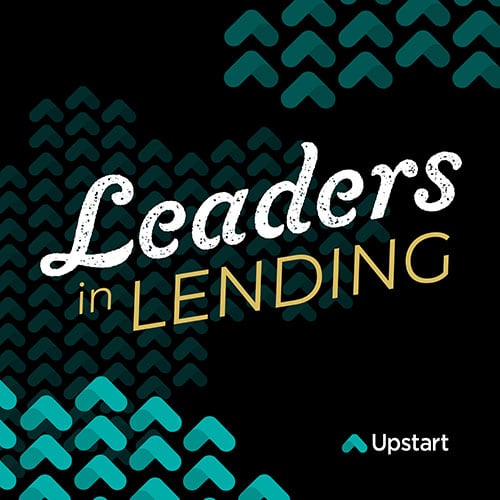Leaders in Lending | Ep. 80
Bringing Consumer Tech Innovation to Commercial
Allan Rayson, Chief Innovation Officer and Chief Technology Officer at Encore Bank, shares how lenders can implement some of the innovation in the consumer lending space to commercial lending.


GUEST SPEAKER
Allan Rayson
Allan Rayson is an accomplished banker and leader with a twenty year track record as a commercial banker and market executive in the commercial banking and specialty finance space. Rayson is also former CEO and Co-Founder of PaidUp, a financial technology company designed to support youth sports clubs. Rayson and his co-founders launched the startup in Austin, TX where they supported youth sports clubs across the domestic U.S. Applying what he has learned in FinTech and banking, Rayson is now Chief Innovation Officer and Chief Technology Officer at an entrepreneurial bank called Encore Bank.

ABOUT
Encore Bank
Encore Bank is a private, boutique bank with a commercial focus that couples highly experienced and talented bankers with innovative technology to offer unprecedented levels of personal service and experiences to its clients through a hospitality-inspired concierge approach. Encore provides a full suite of financial products and services to businesses, business owners, professionals, their families and contacts with purpose, passion and precision.
Key Takeaways
-
Inefficiencies in commercial banking
-
Community bank and fintech consumer lending collaboration for the commercial space
- Useful lessons applied to a traditional financial institution


“The opportunity that I see is community banks and fintechs coming together, to be able to be able to solve for [process inefficiencies] much more efficiently than a money center bank.”

“In commercial side of FinTech, think about the opportunities that exist and commercial lending, from business payments and lending money to the time it gets for a company to get paid - and actually get money in their account in two to three days.”
EPISODE RECAP & SUMMARY
Innovations in fintech have helped expand consumer access to credit, but the same hasn’t been true for the commercial banking industry. Lending time for middle market businesses can take up to 100 days. And that lag time to accessing capital can slow a business down incredibly.
Fintech has invested less in optimizing the lending market for commercial businesses and Allan Rayson, Chief Innovation Officer at Encore Bank, is determined to change that. Rayson spent the majority of his career in commercial banking and recognizes the need to streamline the process for extending commercial credit.
Inefficiencies in commercial banking
Spending the majority of his career in the commercial banking space, Rayson has worked on several hundred commercial or corporate loans. In that time, one of the biggest problems he’s seen is how long it takes for middle market companies to access capital.
For micro and small businesses, accessing capital takes a matter of hours or days. For the middle market, it can take months. With the goal of reducing the approximately 100 day process to only 10 days, Rayson breaks down the areas that need improving into 3 buckets:
- How data gets to banks: Currently, banks ask for close to 20 pieces of information to be emailed over. That information then has to be added to the system by a human analyst.
- The underwriting and negotiation process: Once all data has been received, it then has to be underwritten—a process that still involves a lot of human intervention.
- Bank back office documentation: Partnering with legal counsel to document a $10-15 million C&I loan takes too much time.
For Rayson, each of these issues can be improved by automation:
He explained, “It's a first step, and I've even started challenging the fintech community to help me solve this. Let's find a way to solve this together because when we do that we have accelerated the time that it takes for a middle market company to access capital and it's a complete game changer for the business owner.”
Community bank and fintech consumer lending collaboration for the commercial space
While the fintech community has improved consumer experiences and products, we haven’t seen the same kind of innovation in the commercial space. The reason, according to Rayson, has to do with the complexity.
“We can generally automate the process of deciding on a consumer loan with a few pieces of data. On the commercial side, that data set goes from a five page application, to 80 or 100 pages of information," said Rayson.
To solve this problem, community banks and fintechs have to come together. It’s the only way to achieve the automation that the space so desperately needs. Fortunately, change is already underway:
- Data is much more accessible and ingestible than it’s ever been before.
- Firms are automating the process of small business lending.
- Technology transformation is taking place in the back offices of banks.
Rayson points out that while this is hopeful, we are still a long way from reaping the rewards: “We're seeing some really meaningful moves in those three buckets, but the industry, even despite those moves, hasn't really seen money come down in a really meaningful way quite yet,” he said.
Useful lessons applied to a traditional financial institution
With a background in the business side of banking combined with fintech knowledge—going as far as starting a fintech company—Rayson has taken a lot with him back into banking.
He explained, “I got a good understanding of the business side of things and how banks drive revenue and make money. And also have a good understanding because of the work in the fintech space, and can bring those two things together to produce real outcomes versus winging it.”
Teams need to understand how the business makes money to know the true depth of how they’re individually contributing and what differentiates them from the competition.





